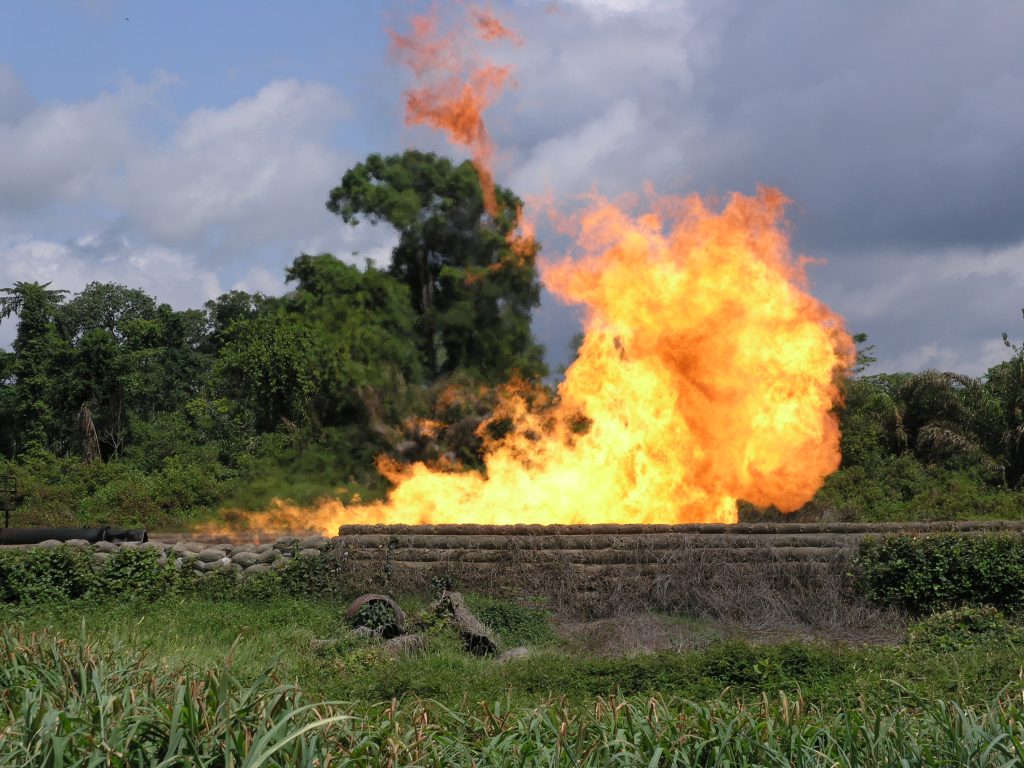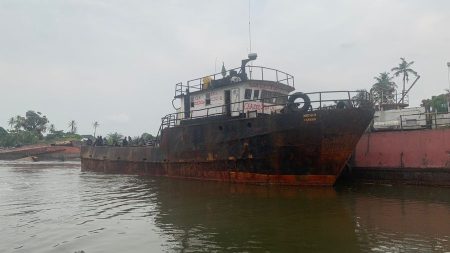
Chijioke K. Mama
01 February 2015, Sweetcrude, Lagos – In August 2013, the Nigerian National Petroleum Corporation (NNPC) said it was in talks with several companies for the possible utilization of Floating Liquefied Natural Gas (FLNG) technology to access Nigeria’s enormous stranded offshore gases. That was a good initiative. Reports have increasingly suggested that Nigeria has huge economic opportunities, if she develops her proven gas reserves maximally. According to Nigeria’s minister of National Planning, Abubakar Sulaiman “The nation has a proven reserve of about 180 trillion cubic feet (tcf) of natural gas and is ranked 8th among countries with the largest proven natural gas deposit in the world”
Since the Oil and Gas industry (and the world) came to the realization of the commercial value of Natural gas and its derivatives, many nations has embarked on the development of robust frameworks to fully tap into their gas resources. Nigeria has immeasurable potential within the gas value chain. Industry experts believe that there are situations in the industry, which are comparatively beneficial to the actualization of this potential. Nigeria’s gas professionals has since realized this, sequel to which, Nigeria’s foremost gas association (Nigerian Gas Association) nurtured the development of the Gas Master Plan (NGMP).
The FLNG Technology
Floating Liquefied Natural Gas Technology is a relatively new one, but it holds a lot of promise (as well as risks too). FLNG is simply a convergence of onshore liquefaction technology, offshore production technology and existing knowledge in LNG transport. The technology is unique, due to the need to demonstrate compactness and durability; attributes that are necessary to overcome challenging conditions in areas typically >200km offshore. Succinctly, FLNG technology takes an onshore liquefaction facility close to the gas field for production, liquefaction and quick access to market. In most instances, the technology makes feasible the production of gas fields previously considered not commercially viable.
Stranded gas fields account for up to 30% of the world’s total gas reserves, according to a recent FLNG investment forecast by UK based Infield Systems. These gases will be too precious to be left untapped in a world with an ever growing demand for LNG; LNG market is forecast to grow 50 percent by 2015 according to Wood Mackenzie. Thanks to FLNG technology, pioneered by shell in the Prelude Gas field of the Brown Basin in North-West Australia, these fields are now within reach and even closer to market. But this comes with enormous technological, political and economic challenges.
Economic considerations
Floating facilities are designed to make inaccessible fields to be accessible and marginal finds to be economically viable. Fields or clusters of fields down to 1 tcf in some locations can be made viable using FLNG. This is achieved by circumventing the huge expenditures associated with laying subsea pipelines from the field to an onshore liquefaction plant (in the case of conventional LNG). As well as, by eliminating the cost of decommissioning the offshore production facility, the pipeline system to shore and the onshore facility itself; when the field in view has been depleted. Using an FLNG vessel, the facility is simply towed away to the next field for continued production, once the gas field being considered is depleted. (Probably after Dry Docking and retooling)
Political considerations
The political hurdles implicated in an FLNG project are varied. The prelude FLNG tussle provides a good case study. The government of Western Australia prefers the construction of a liquefaction facility onshore rather than an FLNG. The latter eliminates the usual benefits of local job creation and the bust of contracts that follow the building of plants. Sadly, with FLNG projects, huge Capital from the IOCs is taken to third party nations (South Korea in the case of Prelude FLNG) where the facility is fabricated. Additionally – given the usual distance of FLNG fields – royalties and tax ideally accrue to national governments and not state or regional governments, contributing yet to some form of political tension and arguments.
In another scenario, stranded gas is likely to occur in areas often considered a Joint Development Zone by two nations. Political rift may arise, as to what is the optimal way to exploit these fields, with each nation having opposing opinion. The Nation that has the straddled fields closer to their shore would ideally argue in favor of an onshore facility (rather than FLNG), so as to accrue the mentioned benefits. This was the case between Australia and East Timor sharing both the prelude basin and the Greater Sunrise Basin.
Factoring FLNG into Nigeria Gas Master Plan
The seed stage of every technology is usually the best time to join. The benefits are often profound and FLNG is no exception. It may be considered a big gain that the pioneer in FLNG technology (Royal-Dutch shell) has a huge presence in Nigeria. Recent forecast predicts good growths in FLNG demand around the world. Although the technology is available to other players, Shell’s presence vis-a-vis Nigeria’s gas potential might help to facilitate things. There are a number of FLNG projects being considered in Nigeria, but a more holistic approach is required to plug the new technology into existing gas policies. In a manner that will ensure measurable contribution to national development in the long term.
Local content and skills development
Plugging into a technology in its early stage will require a lot of foresight. As the FLNG industry takes off around the world, a huge part of the manpower requirement will be focused on operation and maintenance skills. These skills may be similar to that required in FPSOs and onshore liquefaction plants, however, FLNG presents some unique operational and maintenance challenges that call for rare skills. In the Prelude project, Shell established an FLNG manpower development center in partnership with Curtin University and Challenger Institute in Western Australia. As these centers develop and churn out manpower – even above the requirements of the prelude FLNG – the impact is a surplus availability of Australian manpower, that could be utilized in numerous other FLNG vessels coming on stream around the world. This might just be the right time to articulate and implement policies, meant to develop local skills in FLNG maintenance and operation even prior to the completion of the numerous proposed projects in Nigeria. Elsewhere in Africa, many FLNG projects are being pursued; Cameroon recently signed an FLNG deal with Golar LNG Ltd. London-based Ophir Energy has also signed a deal with Equatorial Guinea for an FLNG facility.
Potential impacts on domestic gas consumption
As noted earlier, one advantage of FLNG is the proximity to market. From production locations, LNG transport vessels are used to move the products to market faster compared to onshore plants. This underlines the export-focused nature of FLNG products. It should be a matter of concern for Nigerian’s gas market which is currently undersupplied. Multiple Gas-Powered plants are being switched on and many more are nearing completion in Nigeria. Petrochemical plants that take gas as feedstock are also being built (Quantum Petrochemical in Akwa Ibom State, in the southern tip of Nigeria) by business mogul Jim Ovia). Prior to or at the completion of any of the proposed projects, perhaps, an FLNG version of the Domestic Gas Obligation Regulation in Nigeria will be enacted. This will ensure that a sizable portion of the gas produced is made available to the local market. The regulation is (will be for FLNG) a protectionist regulation meant to protect existing and potential gas based industries such as petrochemicals, manufacturers, LPG and power producers.
Requisite leadership
Nigeria’s Petroleum Minister is an achiever. Mrs. Diezani Alison-Madueke has sterling records in both her private and public sector career. Her previous achievements, when juxtaposed with her current positions both regionally and globally (she is currently the OPEC president) would naturally inspire a lot of optimism from stakeholders in Nigeria’s extractive industry. An industry that has continually failed to deliver some expected dividends or perform at par with other oil producing nations, due to large scale corruption, systemic inefficiency and unproductive bureaucracy. Implementing a visible change in an industry such as this, would ideally take time and efforts. With such competence/skills and if she stays on beyond this ending administration (Nigeria goes to the polls in two weeks) the Oil and Gas industry in Nigeria could be repositioned to assume a more positive status than the current. Nigeria’s huge resources has however led to a resource-curse rather than lifting millions of Nigerian household straddled in poverty. Developing the huge gas reserves alone has the capacity to push the economy forward and improve the lives of many citizens. Now, more than ever, sterling leadership qualities and strong motivation for redefining the status quo are needed on the part of industry leaders. The likes of Madam Diezani, with her political might, experience and relevance in this administration was suggested to be the tool needed to bring the big change. The capacity to push even the hardest of policies past the tightest of corridors (often attributed to her) and the intellect to discern what the industry yearns for, are albeit all within the petroleum ministers’ reach.
*Chijoke K. MAMA is a Senior Oil and Gas Analyst in Lagos, Nigeria. Chijioke.mama@yahoo.com | 070-6101-3333
Sources
Norwegian University of Science and Technology: FLNG |Barend Pek: A High Capacity Floating LNG Design |Erik Aronsson: FLNG compared to LNG carriers |Jean-Marc Letournel: Floating liquefied Natural Gas from concept to reality | Thisday Nigeria.



